Search Result
Results for "
quorum
" in MedChemExpress (MCE) Product Catalog:
4
Biochemical Assay Reagents
| Cat. No. |
Product Name |
Target |
Research Areas |
Chemical Structure |
-
- HY-137407
-
|
|
Bacterial
|
Infection
|
|
N-Phenylacetyl-L-homoserine lactone is a small diffusible signaling molecule that strongly antagonizes or super-activates the quorum sensing of Vibrio fischeri .
|
-
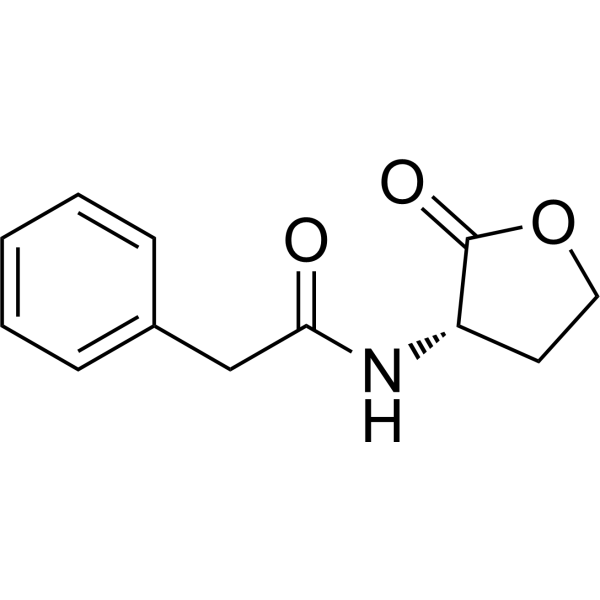
-
- HY-N12660
-
|
|
Bacterial
|
Infection
|
|
Quorum Sensing-IN-4 (compound 2) is a quorum sensing inhibitor, and can be isolated from Thailand mangrove-derived Streptomyces strain, OUCMDZ-5511 .
|
-
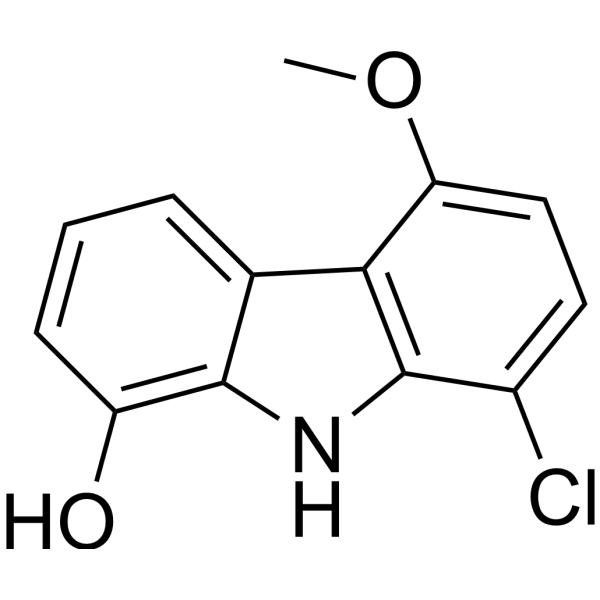
-
- HY-149479
-
|
|
Bacterial
|
Infection
|
|
QS-IN-1 (Compound 3a) is a quorum sensing inhibitor against pseudomonas aeruginosa. QS-IN-1 inhibits biofilm formation .
|
-
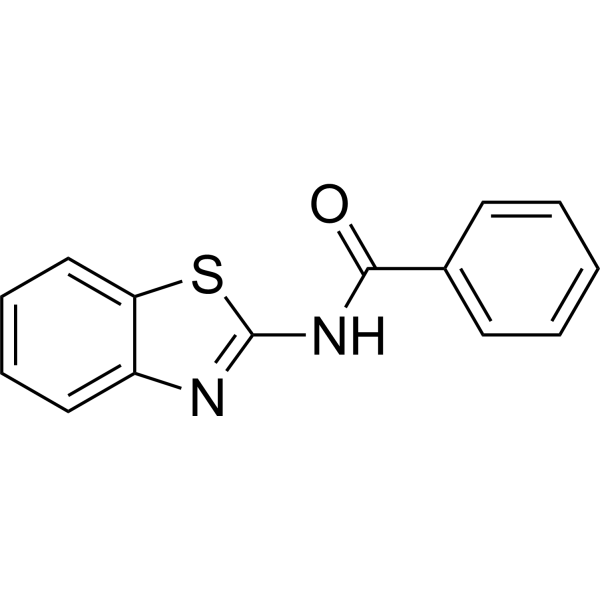
-
- HY-139902
-
|
|
Others
|
Others
|
|
Quorum Sensing-IN-1 is a small-molecule quorum sensing inhibitor.
|
-

-
- HY-149881
-
|
|
Bacterial
|
Infection
|
|
Quorum Sensing-IN-2 (compound 23e) is a quorum sensing inhibitor, which can reduce the pathogenicity of bacteria without affecting bacterial growth. Quorum Sensing-IN-2 inhibits bacterial infections with little hemolytic activity. Quorum Sensing-IN-2 shows synergistic effect with Ciprofloxacin (HY-B0356) in the bacteremia model infected with P. aeruginosa PAO1 .
|
-
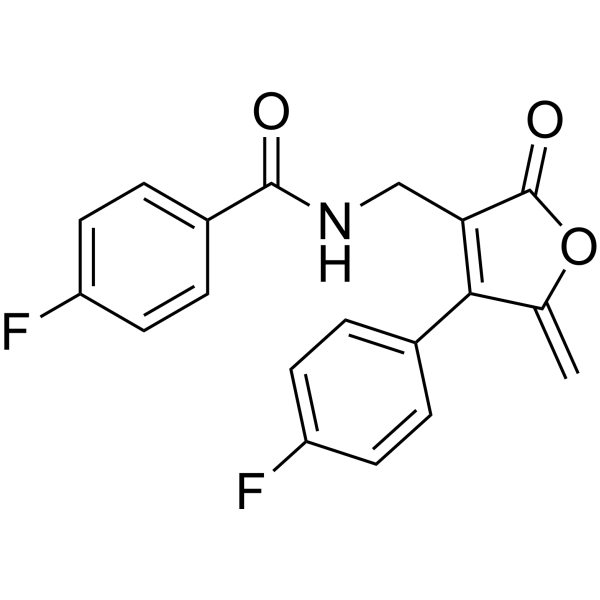
-
- HY-W045071
-
|
|
Bacterial
|
Infection
|
|
N-Hexanoyl-DL-homoserine lactone is a bacterial quorum sensing molecule produced in the rhizosphere. N-Hexanoyl-DL-homoserine lactone, a bacterial quorum sensing signal, induces transcriptional changes in Arabidopsis and may contribute to tuning plant growth to the microbial composition of the rhizosphere .
|
-
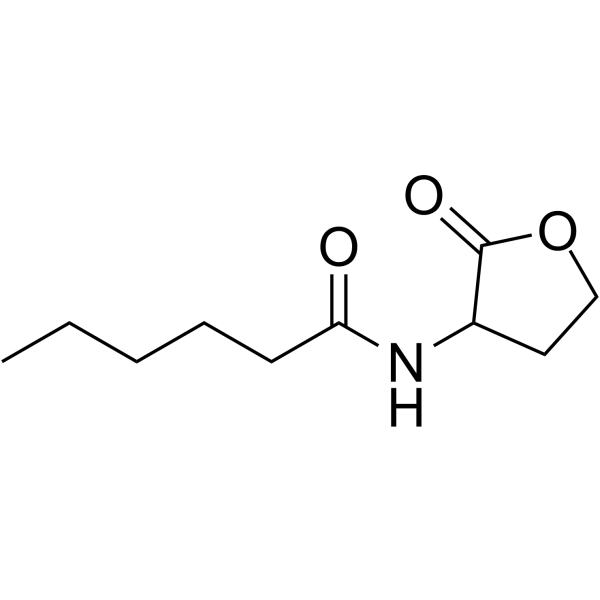
-
- HY-129405
-
|
|
Bacterial
|
Infection
|
|
N-(Ketocaproyl)-DL-homoserine lactone is a natural, very active ligand of LuxR. N-(Ketocaproyl)-DL-homoserine lactone is a quorum sensing (QS) autoinducer .
|
-
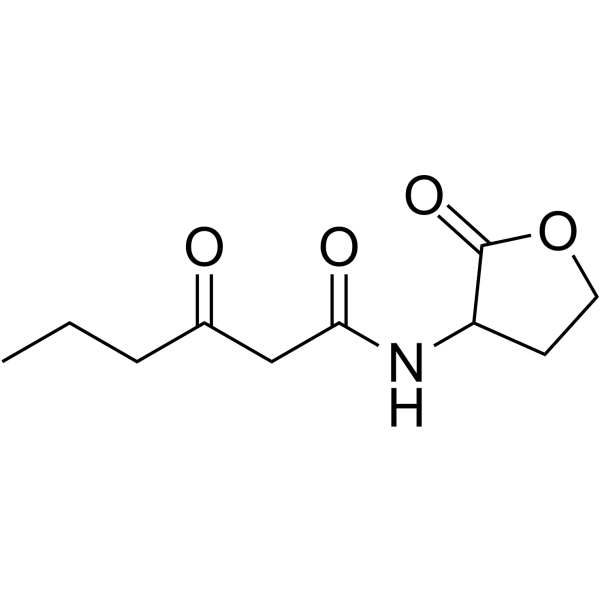
-
- HY-149762
-
|
|
Bacterial
|
Infection
|
|
IMBI (compound 32) is an antibacterial agent that inhibits quorum sensing (QS) against drug-resistant pathogens. IMBI inhibits biofilm formation of Salmonella marcescens and restores or increases its susceptibility to antimicrobial drugs .
|
-
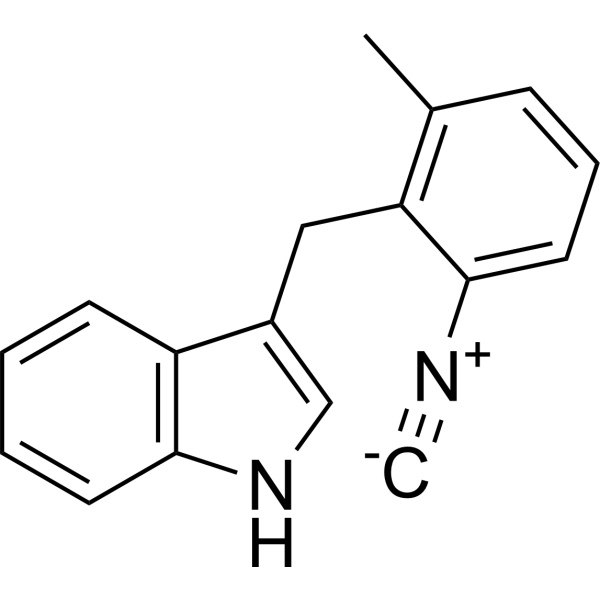
-
- HY-P2522
-
|
|
Bacterial
|
Infection
|
|
Competence-Stimulating Peptide-2 (CSP-2) is a quorum sensing signal peptide produced by Streptococcus pneumoniae. ComD2 is a compatible receptor of Competence-Stimulating Peptide-2 (CSP-2) with an EC50 value of 50.7 nM .
|
-

-
- HY-P2145
-
|
EDF
|
Bacterial
|
Infection
|
|
Extracellular death factor (EDF) is the only single signaling molecule involved in Escherichia coli quorum sensing, and can initiate MAZEF-mediated cell death. Extracellular death factor significantly amplifies the endoribonucleolytic activities of both MazF and ChpBK .
|
-
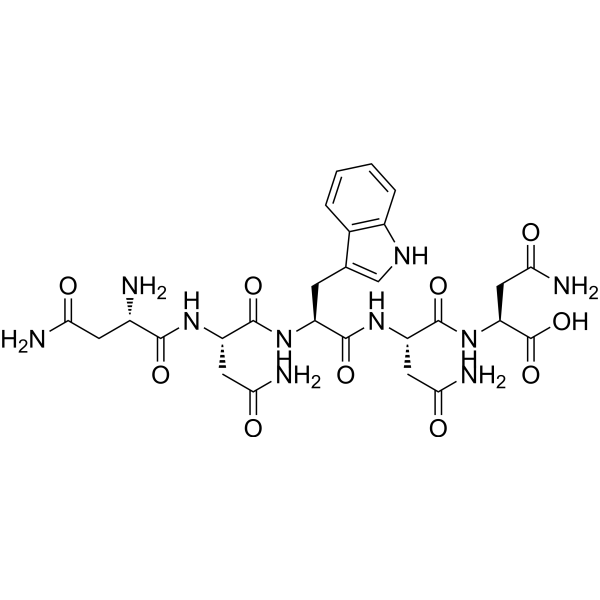
-
- HY-N10192
-
|
|
Endogenous Metabolite
Bacterial
|
Infection
|
|
Aculene D, a fungal metabolite, shows quorum sensing (QS) inhibitory activity against Chromobacterium violaceum CV026, and could significantly reduce violacein production in N-hexanoyl-l-homoserine lactone (C6-HSL) induced C. violaceum CV026 cultures at sub-inhibitory concentrations .
|
-
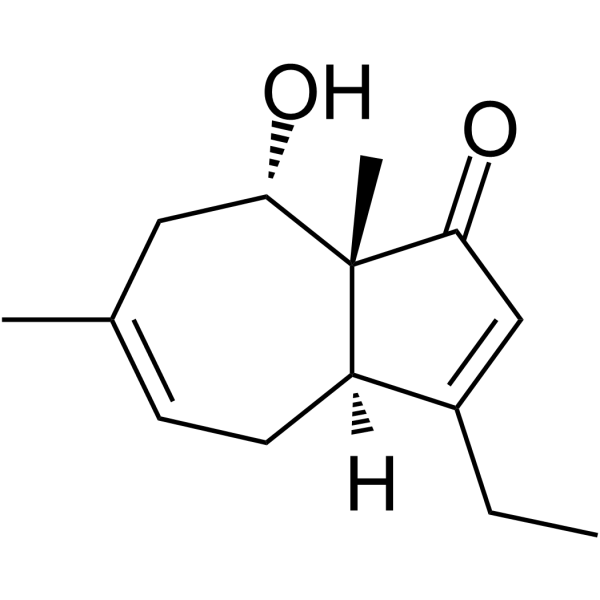
-
- HY-156439
-
|
|
Bacterial
|
Infection
|
|
Antibiofilm agent-2 (compound 4T) is a potent biofilm inhibitor with an IC50 of 3.6 μM. Antibiofilm agent-2 inhibits the quorum sensing system and iron homeostasis as antibacterial synergists against Pseudomonas aeruginosa .
|
-
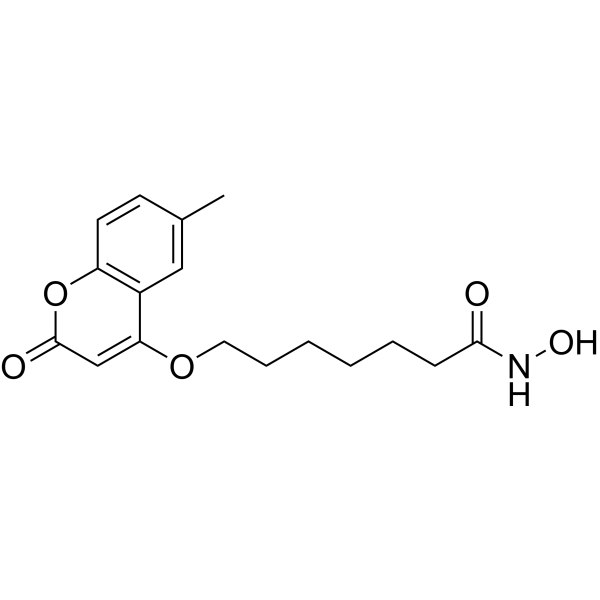
-
- HY-133683
-
|
3-Oxo-C14-AHL
|
Others
|
Metabolic Disease
|
|
N-(3-Oxotetradecanoyl)-DL-homoserine lactone, a member of N-Acyl homoserine lactone (AHL) from gram-negative bacteria, is a quorum sensing (QS) signaling molecule .
|
-
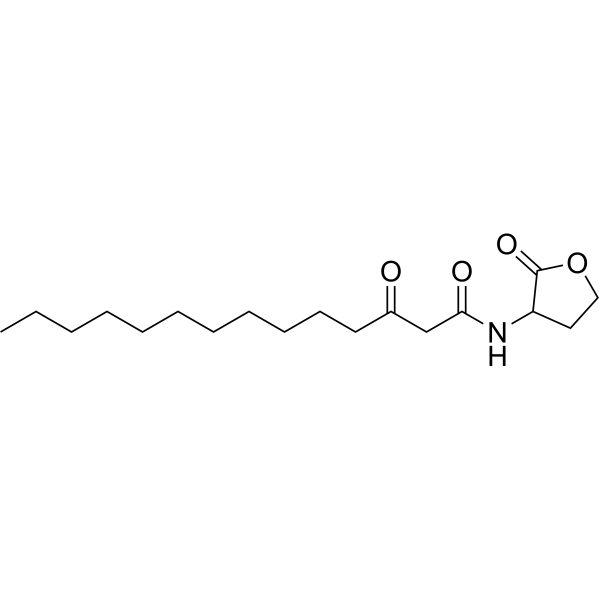
-
- HY-141641
-
|
HSL
|
Bacterial
|
|
|
N-(3-Oxopentanoyl)-L-homoserine lactone is an autoinducer, a kind of chemical signal molecule which passively diffuses across the bacterial envelope and accumulates intracellularly at high bacterial densities. It may bind to a protein related to the LuxR protein of V. fischeri and causes cell density-dependent gene expression. N-(3-Oxopentanoyl)-L-homoserine can be used for research of quorum sensing .
|
-
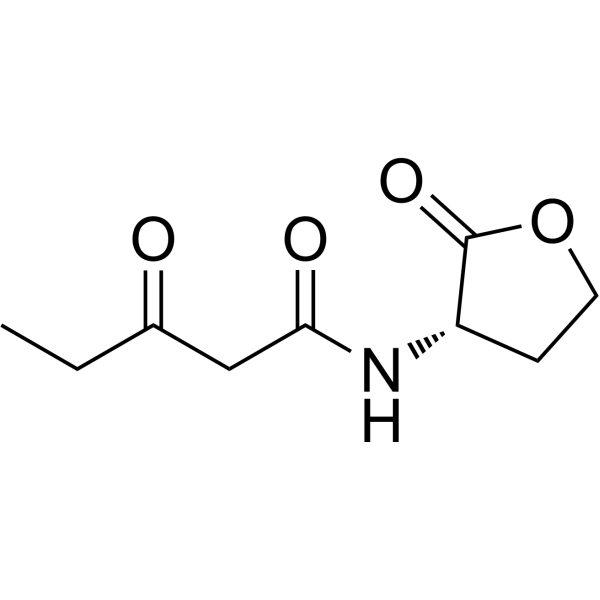
-
- HY-111278
-
-

-
- HY-134215
-
|
|
Bacterial
Fungal
|
Infection
|
cis-11-Methyl-2-dodecenoic acid is a quorum sensing (QS) signal that acts as a diffusion signaling factor (DSF) in extracellular microbial and fungal communication systems. DSF is involved in the regulation of virulence and biofilm formation of a variety of bacterial pathogens .
|
-
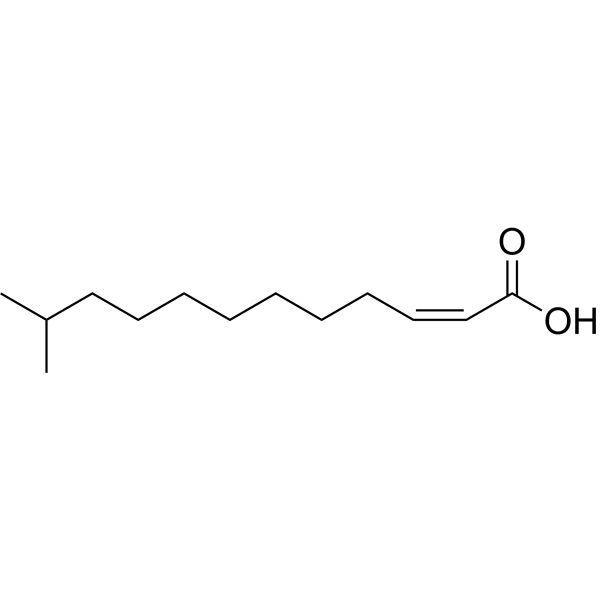
-
- HY-P2454
-
|
|
Bacterial
|
Infection
|
|
CSP1 is a potent and selective ComD1 receptor agonist, with an IC50 of 10.3 nM. CSP1 is a major variants of competence-stimulating peptide (CSP), and it can regulate genetic transformation of S. pneumonia by modulating quorum sensing (QS). CSP1 can act as an antibacterial agent .
|
-
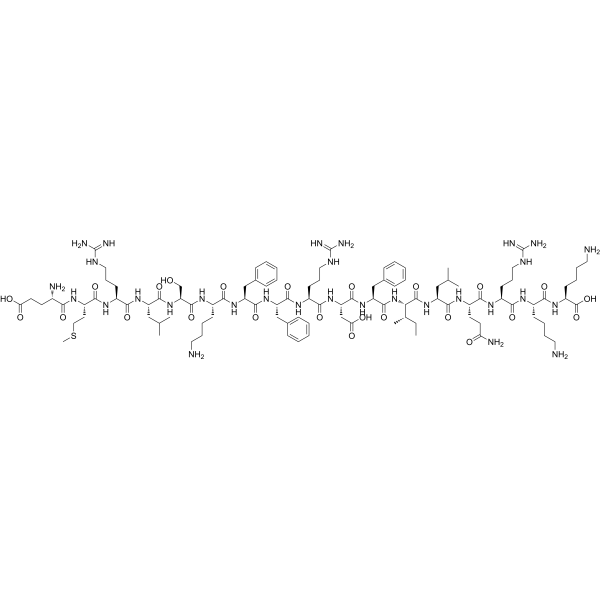
-
- HY-145462
-
|
|
Bacterial
|
Infection
|
|
N-cis-octadec-9Z-enoyl-L-Homoserine lactone is a potent inhibitor of AhyI. AhyI (expressing acylhomoserine lactone) is responsible for the biosynthesis of autoinducer-1 (AI-1), commonly referred to as a quorum sensing (QS) signaling molecule, which plays an essential role in bacterial communication. N-cis-octadec-9Z-enoyl-L-Homoserine lactone is a competitive inhibitor of AI-1 biosynthesis .
|
-

-
- HY-146304
-
|
|
Bacterial
|
Infection
|
|
YXL-13 is a potent Pseudomonas aeruginosa (PAO1) inhibitor with an IC50 value of 3.686 μM. YXL-13 can inhibit virulence factors and biofilm formation of PAO1. YXL-13 reduces the pathogenicity and agent resistance of PAO1 by inhibition of the quorum sensing (QS) system. YXL-13 can be used for researching anti-bacteria .
|
-

-
- HY-W007390
-
|
|
Bacterial
|
Infection
|
|
Methyl 2-amino-5-bromobenzoate (compound 8/12) can be used for synthesis of 2-benzamidobenzoic acids, which are known FabH inhibitors. The derivates also inhibit PqsD, the pqs quorum sensing (QS) system of Pseudomonas aeruginosa, involving the production of a number of virulence factors and biofilm formation .
|
-
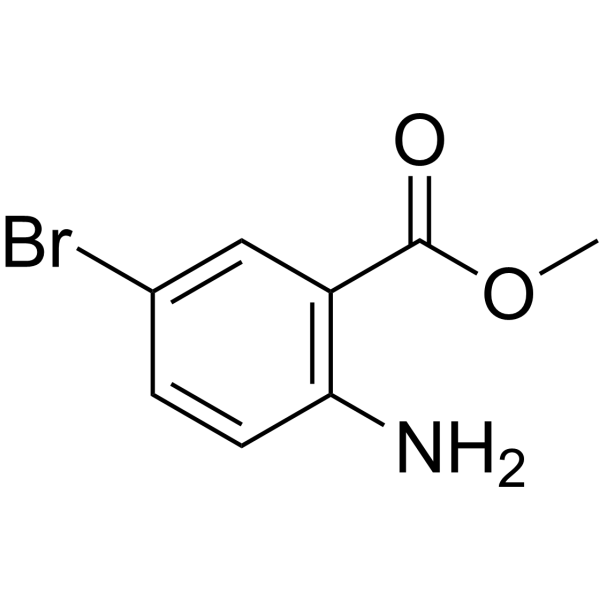
-
- HY-W008806
-
-
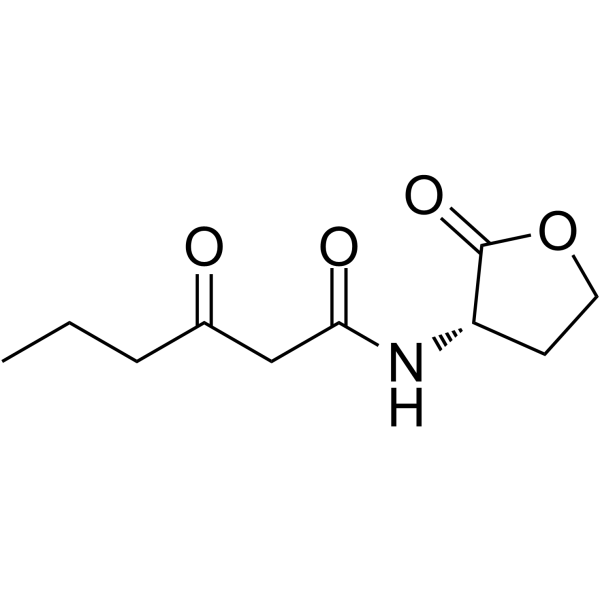
-
- HY-114544A
-
|
OdDHL
|
Bacterial
|
Others
|
|
N-3-oxo-dodecanoyl-L-Homoserine lactone (3-oxo-C12-HSL) is a bacterial quorum-sensing signaling molecule produced by P. aeruginosa and strains of the B. cepacia complex [2].Quorum sensing is a regulatory system used by bacteria for controlling gene expression in response to increasing cell density.N-3-oxo-dodecanoyl-L-Homoserine lactone induces the production of IL-8 in 16HBE human bronchial epithelial cells .
|
-

-
- HY-108700
-
|
|
SOD
|
Infection
|
|
N-3-Oxo-octanoyl-L-homoserine lactone, a quorum-sensing signal, is an Agrobacterium autoinducer .
|
-
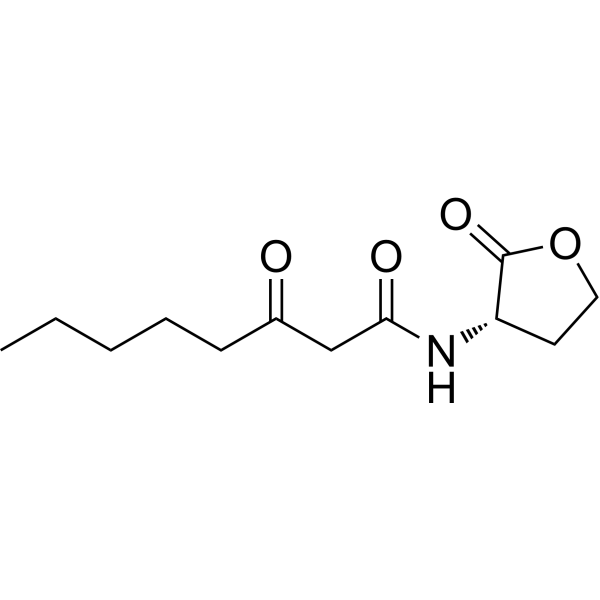
-
- HY-116762
-
|
|
Biochemical Assay Reagents
|
Others
|
|
Quorum sensing is a regulatory system used by bacteria to control gene expression in response to increased cell density. The control of bacterial infection by quenching the quorum sensing system of bacteria is a promising research area. The expression of specific target genes, such as transcriptional regulators belonging to the LuxIR protein family, is coordinated by the synthesis of diffusible acyl homoserine lactone (AHL) molecules. N-butyryl-L-Homocysteine thio-lactone is an analog of N-butyryl-L-homoserine lactone, a small, diffusible signaling molecule involved in quorum sensing, thereby controlling gene expression and cellular metabolism . N-butyryl-L-homocysteine thiolactone induces violacein expression in Viola viola mutants that normally fail to produce AHL.
|
-

-
- HY-W342499
-
|
Methyl 3-hydroxytetradecanoate; 3-OH PAME; Methyl 3-hydroxymyristate
|
Others
|
Metabolic Disease
|
|
3-Hydroxy myristic acid methyl ester (Methyl 3-hydroxytetradecanoate) is the quorum-sensing signal molecule (quormone), which regulates the virulence of Ralstonia solanacearum .
|
-
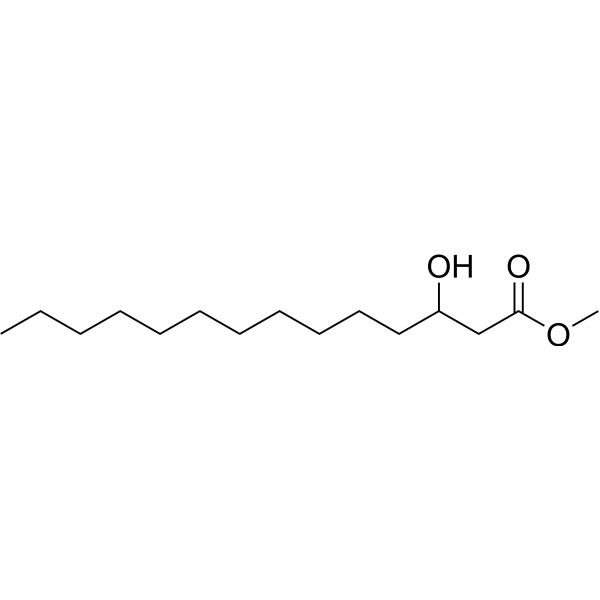
-
- HY-158124
-
|
|
Bacterial
|
Infection
|
|
LasR antagonist 1 (Compound 7) is an antagonist for LasR with an IC50 of 0.4 μM, that modulates the quorum sensing (QS) in the opportunistic pathogen Pseudomonas aeruginosa .
|
-

-
- HY-119808
-
-
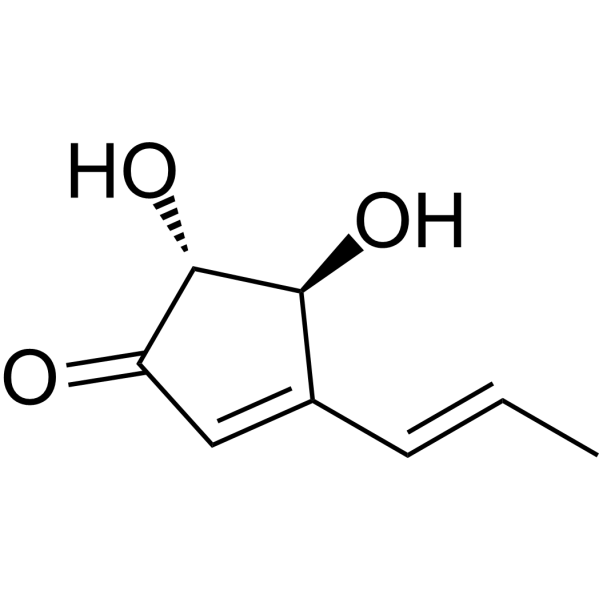
-
- HY-134560
-
|
3-Oxo-C10-HSL
|
Others
|
Inflammation/Immunology
|
|
N-(3-Oxodecanoyl)-L-homoserine lactone (3-Oxo-C10-HSL) is a bacterial quorum sensing signal autoinducer molecule .
|
-
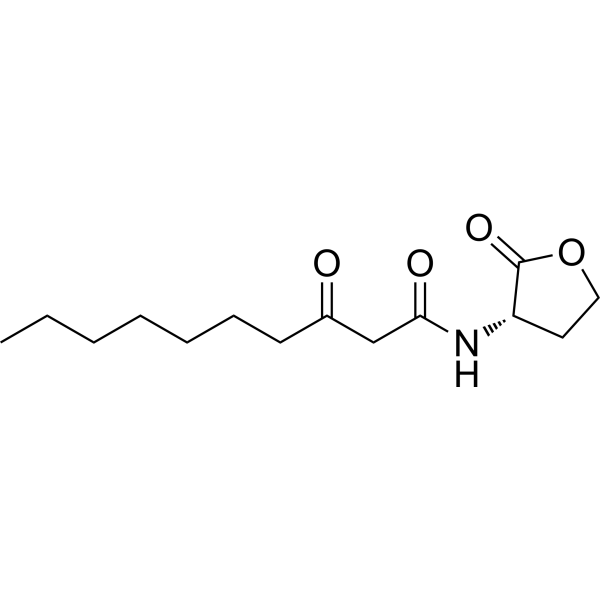
-
- HY-131011
-
|
|
Bacterial
|
Infection
|
|
Furanone C-30 is a quorum sensing inhibitor. Furanone C-30 can effectively inhibit bacterial biofilm formation by S. mutans and its luxSmutant strain .
|
-
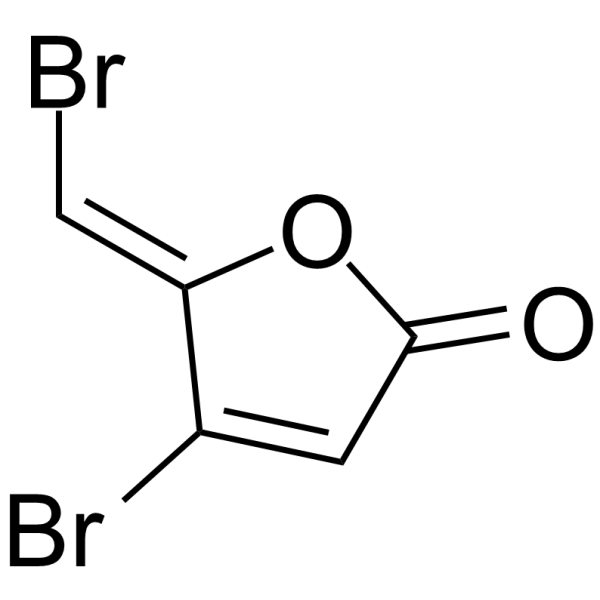
-
- HY-N7788
-
|
|
Bacterial
|
Infection
|
|
cis-2-Dodecenoic acid, originally discovered in Burkholderia cenocepacia, can interfere with the bacterial quorum sensing system and inhibit bacterial biofilm formation and virulence factor production .
|
-

-
- HY-N4117
-
|
|
Bacterial
|
Infection
|
|
Hamamelitannin, a polyphenol extracted from the bark of Hamamelis virginiana, is a quorum-sensing (QS) inhibitor. Hamamelitannin increases antibiotic susceptibility of staphylococcus aureus biofilms by affecting peptidoglycan biosynthesis and eDNA release .
|
-
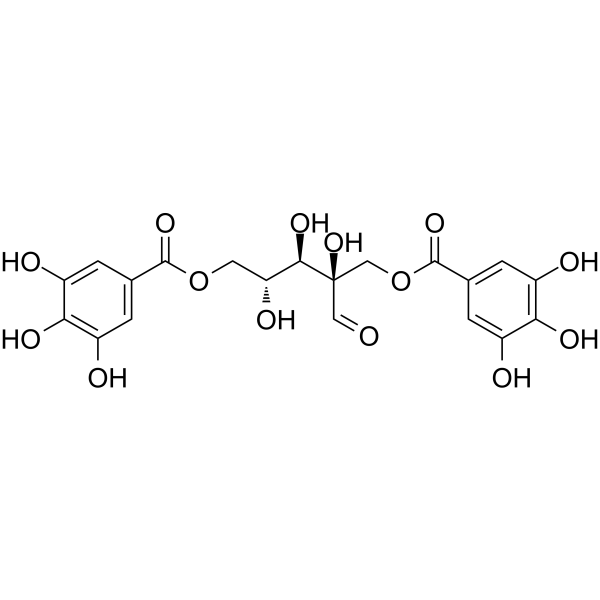
-
- HY-146706
-
|
|
Bacterial
|
Infection
|
|
PqsR-IN-2 (Compound 19) is a potent PqsR (Pseudomonas aeruginosa quorum sensing transcriptional regulator) inhibitor. PqsR-IN-1 attenuates pyocyanin production and has very low cytotoxicity .
|
-
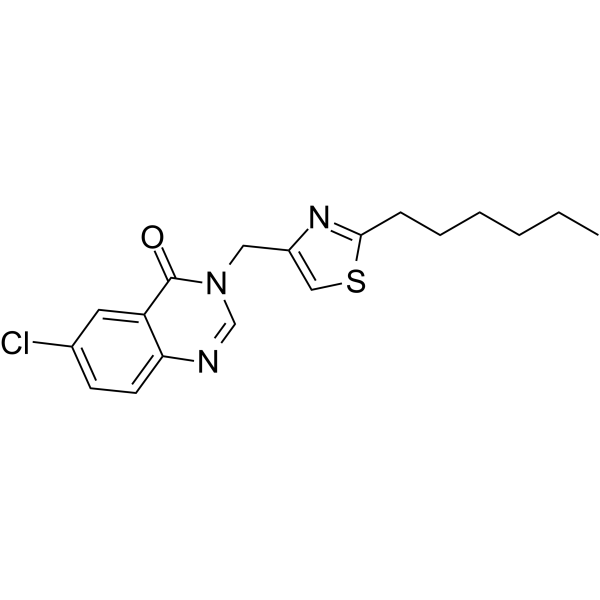
-
- HY-146705
-
|
|
Bacterial
|
Infection
|
|
PqsR-IN-1 (Compound 18) is a potent PqsR (Pseudomonas aeruginosa quorum sensing transcriptional regulator) inhibitor. PqsR-IN-1 attenuates pyocyanin production and has very low cytotoxicity .
|
-

-
- HY-124237A
-
|
|
Bacterial
|
Infection
|
|
N-octanoyl-L-Homoserine lactone is a small diffusible signaling molecule involved in quorum sensing, thereby controlling gene expression and affecting cellular metabolism. N-octanoyl-L-Homoserine lactone can be used for the infection prevention and regulation of virulence in cystic fibro.
|
-
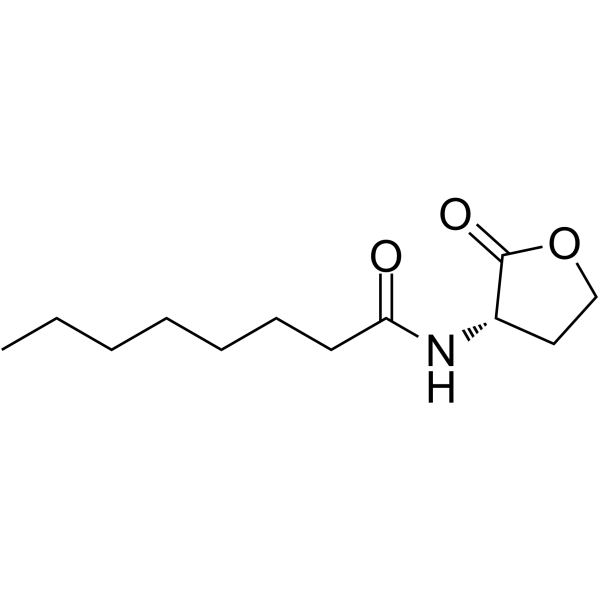
-
- HY-115393A
-
|
|
Bacterial
|
Infection
|
|
N-Heptanoyl-L-homoserine lactone is a member of N-acyl-homoserine lactone family. N-acyl-homoserine lactones (AHL) can regulate gene expression in gram-negative bacteria, such as Echerichia and Salmonella, and are involved in quorum sensing, cell to cell communication among bacteria.
|
-
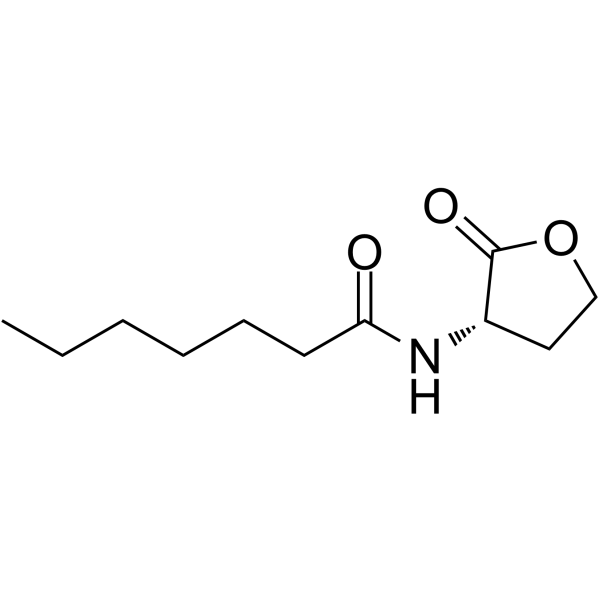
-
- HY-118697
-
|
C12-HSL
|
Others
|
Infection
|
|
N-dodecanoyl-L-Homoserine lactone (C12-HSL) is a quorum sensing (QS) signaling molecule. N-dodecanoyl-L-Homoserine lactone (C12-HSL) aptamers blocks qurom sensing and inhibits biofilm formation in Pseudomonas aeruginosa .
|
-
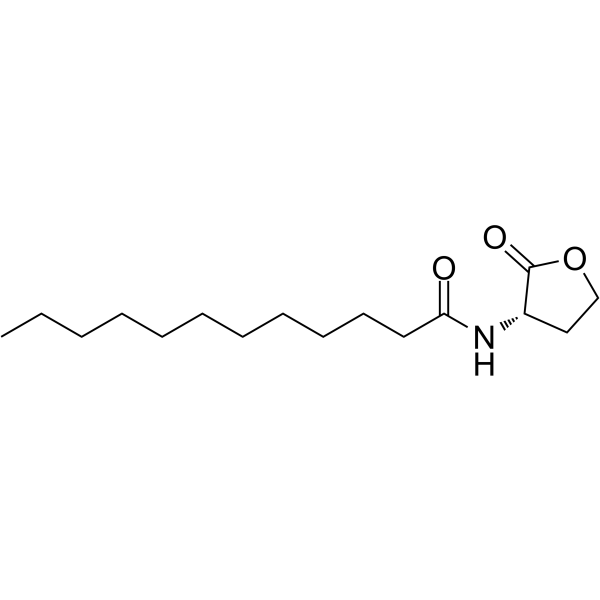
-
- HY-N2795
-
|
Xanthone I
|
Parasite
Bacterial
|
Infection
|
|
9-Hydroxycalabaxanthone (Xanthone I) is a known xanthone isolated from Garcinia mangostana Linn. 9-Hydroxycalabaxanthone has quorum-sensing inhibitory, anti-microbial, and anti-malarial activities (IC50=1.2-1.5 µM) .
|
-
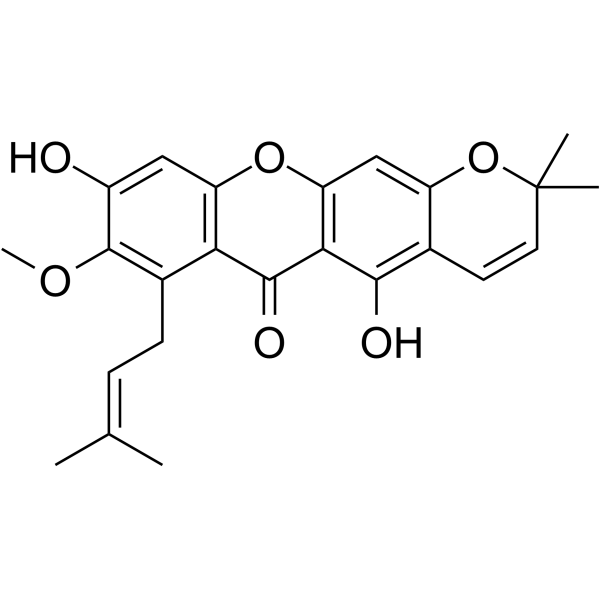
-
- HY-114773
-
|
|
Biochemical Assay Reagents
|
Others
|
|
Quorum sensing is a regulatory system used by bacteria to control gene expression in response to increased cell density. This regulatory process manifests itself in a variety of phenotypes, including biofilm formation and virulence factor production. Coordinated gene expression is achieved through the production, release and detection of small diffusible signaling molecules called autoinducers. N-acylated homoserine lactones (AHLs) comprise a class of such autoinducers, each of which generally consists of a fatty acid coupled to a homoserine lactone (HSL). Modulation of bacterial quorum-sensing signaling systems to suppress pathogenesis represents a new approach to antimicrobial research for infectious diseases. AHLs differ in acyl length (C4-C18), C3 substitution (hydrogen, hydroxyl, or oxo group), and the presence or absence of one or more carbon-carbon double bonds in the fatty acid chain. These differences confer signaling specificity through the affinity of the LuxR family of transcriptional regulators. C11-HSL has a rare odd-numbered acyl carbon chain and may be a minor quorum-sensing signaling molecule in Pseudomonas aeruginosa strains.
|
-

-
- HY-120504
-
|
|
Bacterial
|
Infection
Cancer
|
|
N-Acetyltyramine is a quorum-sensing inhibitor (QSI) compound produced by V. alginolyticus M3-10. N-Acetyltyramine is capable of inhibiting the QS of C. violaceum ATCC 12472. N-acetyltyramine reverses resistance in Doxorubicin-resistant leukemia P388 cells .
|
-
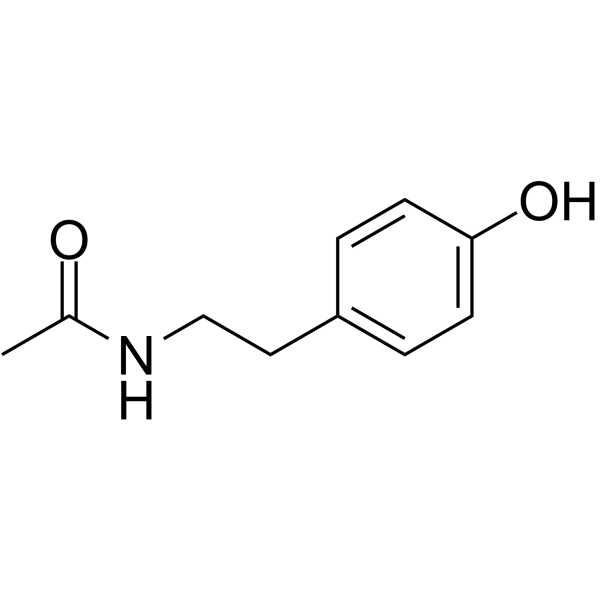
-
- HY-163111
-
|
|
Bacterial
|
Infection
|
|
Antibacterial agent 170 (compound 6b) is a potent antibacterial agent which inhibits the formation of P. aeruginosa PAO1 biofilm. Antibacterial agent 170 exhibits quorum sensing inhibitor effect by the las system. Antibacterial agent 170 can used in study microbial resistance .
|
-
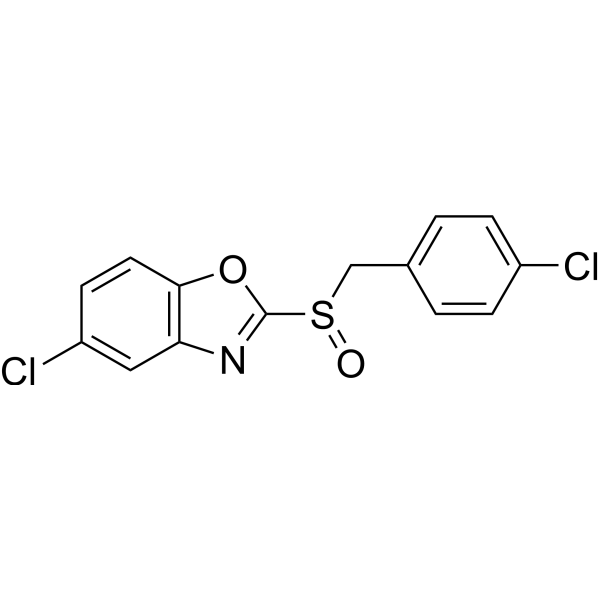
-
- HY-W015818
-
|
2-Benzoxazolone; 1,3-Benzoxazol-2(3H)-one; 2-Hydroxybenzoxazole
|
Parasite
|
Infection
|
|
2-Benzoxazolinone is an anti-leishmanial agent with an LC50 of 40 μg/mL against L. donovani . A building block in chemical synthesis. 1,3-Benzoxazol-2(3H)-one derivatives have antimicrobial activity against a selection of Gram-positive, Gram-negative bacteria and yeasts . Derivatives as anti-quorum sensing agent .
|
-
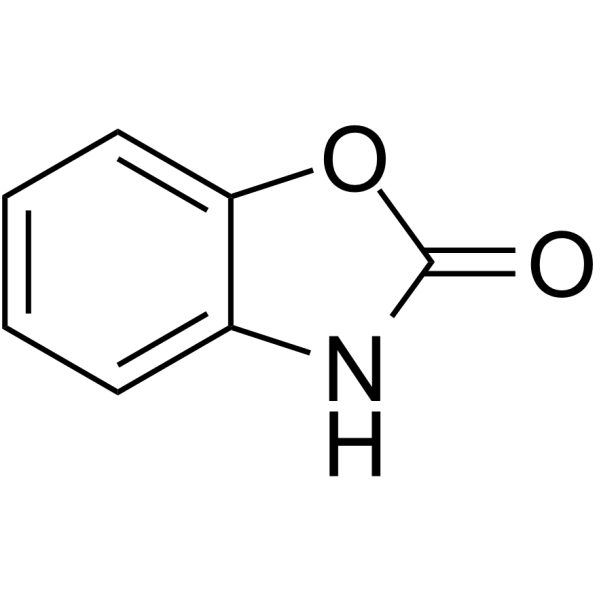
-
- HY-130317
-
|
trans-δ2-11-Methyl-dodecenoic acid
|
Fungal
|
Infection
|
|
trans-11-Methyl-2-dodecenic acid is a isomer of cis-11-Methyl-2-dodecenoic acid (HY-134215). cis-11-Methyl-2-dodecenoic acid is a quorum sensing (QS) signal that acts as a diffusion signaling factor (DSF) in extracellular microbial and fungal communication systems .
|
-
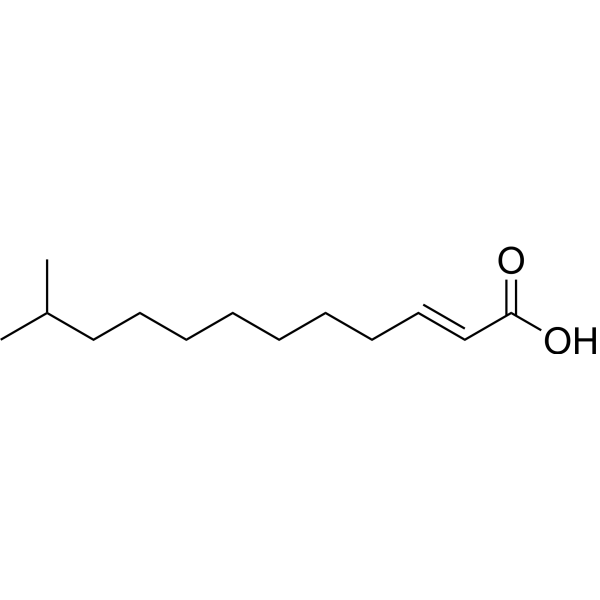
-
- HY-124796
-
|
|
Bacterial
|
Infection
|
|
QStatin is a potent and selective inhibitor of SmcR (V. harveyi LuxR homologue) with an EC50 of 208.9 nM, binding tightly to SmcR and changes the flexibility of the protein, thereby altering its transcription regulatory activity. QStatin shows pan-QS (Vibrio quorum sensing) inhibitor activity in diverse Vibrio species and attenuates their virulence in an aquatic host. QStatin may be a sustainable antivibriosis agent useful in aquacultures .
|
-

-
- HY-P1934
-
|
Cyclo(phenylalanylprolyl); A-64863
|
HCV
|
Infection
|
|
Cyclo(Phe-Pro) (Cyclo(phenylalanylprolyl)), a Vibrio vulnificus quorum-sensing molecule, inhibits retinoic acid-inducible gene-I (RIG-I) polyubiquitination, through its specific interaction with RIG-I, to blunt IRF-3 activation and type-I IFN production. Cyclo(Phe-Pro) (Cyclo(phenylalanylprolyl)) enhances susceptibility to hepatitis C virus (HCV), as well as Sendai and influenza viruses .
|
-

-
- HY-124352
-
|
|
Bacterial
|
Others
|
|
2-nonyl-3-hydroxy-4-Quinolone (C9-PQS) is a quinolone compound produced by P. aeruginosa and other related bacterias. 2-nonyl-3-hydroxy-4-Quinolone is a quorum sensing (QS) signal molecule that controls the expression of many virulence genes as a function of cell population density .
|
-
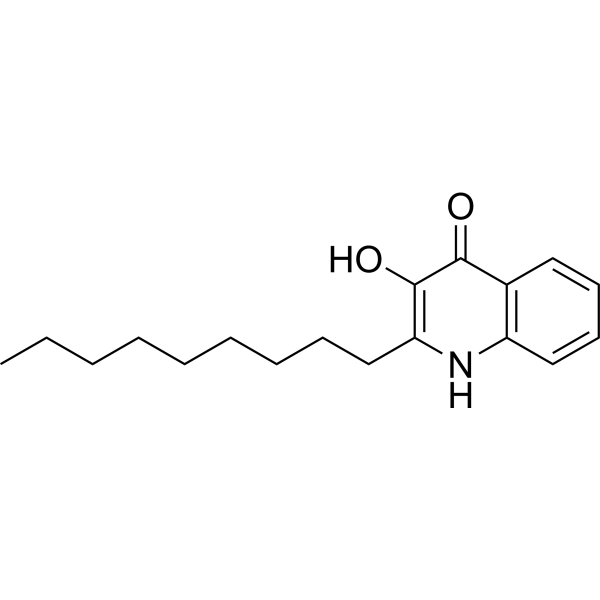
-
- HY-W127487
-
|
|
Biochemical Assay Reagents
|
Others
|
|
Quorum sensing is a regulatory system used by bacteria to control gene expression in response to increased cell density. This regulatory process manifests itself in a variety of phenotypes, including biofilm formation and virulence factor production. Coordinated gene expression is achieved through the production, release and detection of small diffusible signaling molecules called autoinducers. N-acylated homoserine lactones (AHLs) comprise a class of such autoinducers, each of which generally consists of a fatty acid coupled to a homoserine lactone (HSL). Modulation of bacterial quorum-sensing signaling systems to suppress pathogenesis represents a new approach to antimicrobial research for infectious diseases. AHLs differ in acyl length (C4-C18), C3 substitution (hydrogen, hydroxyl, or oxo group), and the presence or absence of one or more carbon-carbon double bonds in the fatty acid chain. These differences confer signaling specificity through the affinity of the LuxR family of transcriptional regulators. C18-HSL, one of four lipophilic long acyl side chain AHLs produced by the LuxI AHL synthase homolog SinI, is involved in quorum-sensing signaling in strains of Rhizobium meliloti (a nitrogen-fixing bacterial symbiont of the legume M. sativa) . C18-HSL and other hydrophobic AHLs tend to localize in the relatively lipophilic environment of bacterial cells and cannot diffuse freely across the cell membrane. Long-chain N-acyl homoserine lactones can be exported from cells by efflux pumps, or can be transported between communicating cells by extracellular outer membrane vesicles.
|
-

-
- HY-114936
-
|
AR-054
|
Bacterial
ADC Cytotoxin
Antibiotic
Mitochondrial Metabolism
|
Infection
Neurological Disease
Cancer
|
|
Piericidin A (AR-054) is a natural mitochondrial NADH-ubiquinone oxidoreductase (complex I) inhibitor. Piericidin A is a potent neurotoxin and inhibits mitochondrial respiration by disrupting the electron transport system through its action on NADH-ubiquinone reductase. Piericidin A is also a potential quorum-sensing inhibitor that suppresses the expression of the virulence genes of Erwinia carotovora subsp. atroseptica (Eca). Piericidin A is an ADC cytotoxin and has anti-bacterial, anticancer, insecticidal activity .
|
-
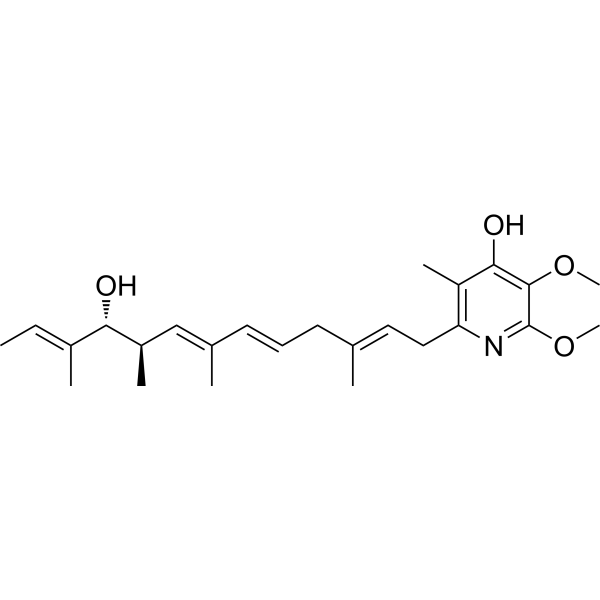
-
- HY-W127393
-
|
|
Biochemical Assay Reagents
|
Others
|
|
Quorum sensing is a regulatory system used by bacteria to control gene expression in response to increased cell density. This regulatory process manifests itself in a variety of phenotypes, including biofilm formation and virulence factor production. Coordinated gene expression is achieved through the production, release and detection of small diffusible signaling molecules called autoinducers. N-acylated homoserine lactones (AHLs) comprise a class of such autoinducers, each of which generally consists of a fatty acid coupled to a homoserine lactone (HSL). Modulation of bacterial quorum-sensing signaling systems to suppress pathogenesis represents a new approach to antimicrobial research for infectious diseases. AHLs differ in acyl length (C4-C18), C3 substitution (hydrogen, hydroxyl, or oxo group), and the presence or absence of one or more carbon-carbon double bonds in the fatty acid chain. These differences confer signaling specificity through the affinity of the LuxR family of transcriptional regulators. C9-HSL is a rare odd-numbered acyl carbon chain produced by wild-type Erwinia carotovora strain SCC 3193 grown in nutrient-rich Luria-Bertani broth (LB) medium.
|
-

-
- HY-N6711
-
|
|
HIV Integrase
|
Infection
|
|
Equisetin is an N-methylserine-derived acyl tetramic acid isolated from a terrestrial fungus Fusarium equiseti NRRL 5537 . Equisetin is a tetramate-containing natural product with antibiotic and cytotoxic activity . Equisetin inhibits the growth of Gram-positive bacteria and HIV-1 integrase activity but shows no activity against Gram-negative bacteria . Equisetin is a Quorum-sensing inhibitor (QSI) that attenuates QS-regulated virulence phenotypes in P. aeruginosa without affecting the growth of bacterias, serves as a leading compound for the treatment of P. aeruginosa infections .
|
-
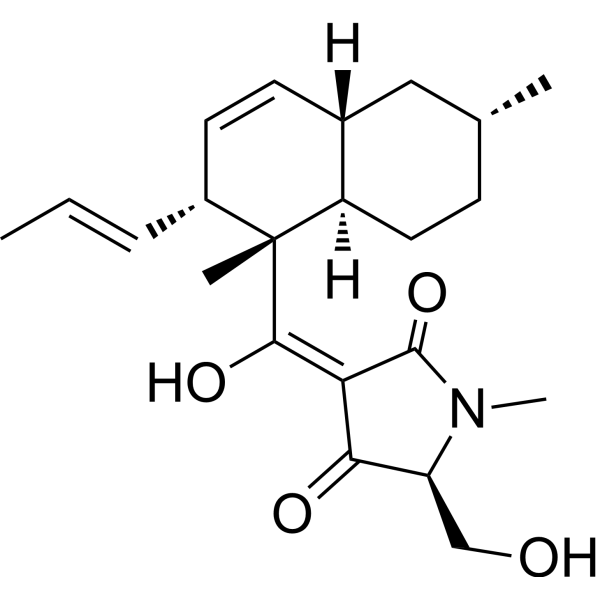
-
- HY-N10572
-
|
|
Bacterial
|
Infection
|
|
Antibacterial synergist 2 (compound 27) is a biofilm inhibitor. Antibacterial synergist 2 shows inhibitory effects to S. enterica, S. aureus, P. aeruginosa and C. albicans. Antibacterial synergist 2 can be used for the research related to biofilm-forming pathogens .
|
-
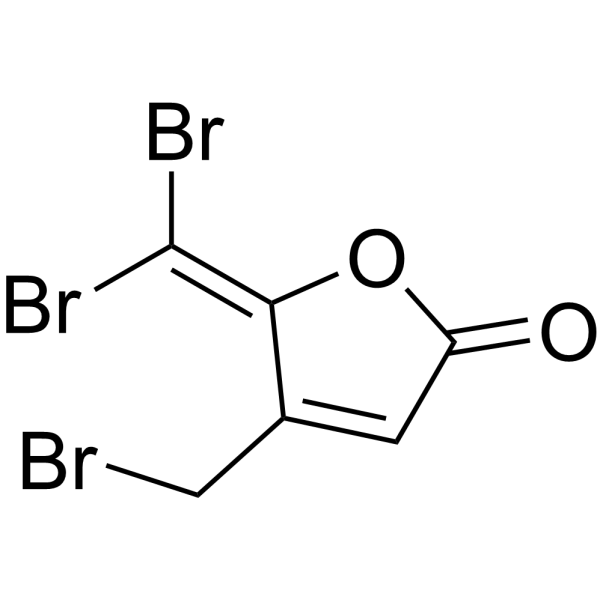
- HY-N12165
-
|
|
Others
|
Others
|
|
1,3,5,6-Tetrahydroxy-8-methylxanthone (compound 8) is a dimeric 1,4-benzoquinone derivative isolated from the marine-derived fungus Penicillium genus .
|
-
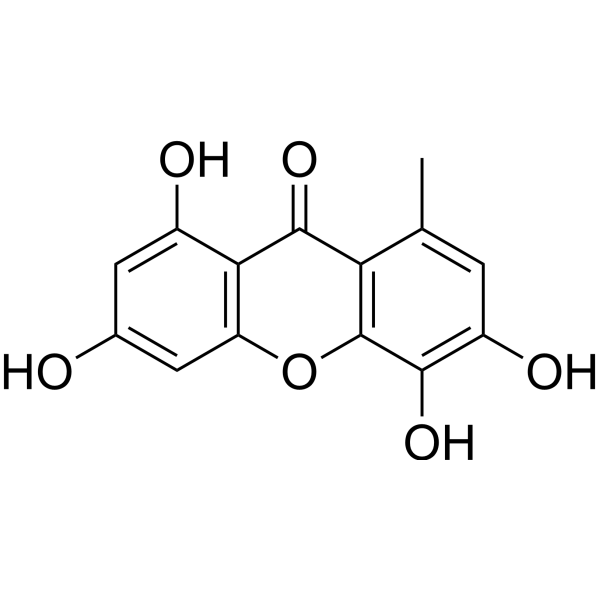
| Cat. No. |
Product Name |
Type |
-
- HY-116762
-
|
|
Biochemical Assay Reagents
|
|
Quorum sensing is a regulatory system used by bacteria to control gene expression in response to increased cell density. The control of bacterial infection by quenching the quorum sensing system of bacteria is a promising research area. The expression of specific target genes, such as transcriptional regulators belonging to the LuxIR protein family, is coordinated by the synthesis of diffusible acyl homoserine lactone (AHL) molecules. N-butyryl-L-Homocysteine thio-lactone is an analog of N-butyryl-L-homoserine lactone, a small, diffusible signaling molecule involved in quorum sensing, thereby controlling gene expression and cellular metabolism . N-butyryl-L-homocysteine thiolactone induces violacein expression in Viola viola mutants that normally fail to produce AHL.
|
-
- HY-114773
-
|
|
Biochemical Assay Reagents
|
|
Quorum sensing is a regulatory system used by bacteria to control gene expression in response to increased cell density. This regulatory process manifests itself in a variety of phenotypes, including biofilm formation and virulence factor production. Coordinated gene expression is achieved through the production, release and detection of small diffusible signaling molecules called autoinducers. N-acylated homoserine lactones (AHLs) comprise a class of such autoinducers, each of which generally consists of a fatty acid coupled to a homoserine lactone (HSL). Modulation of bacterial quorum-sensing signaling systems to suppress pathogenesis represents a new approach to antimicrobial research for infectious diseases. AHLs differ in acyl length (C4-C18), C3 substitution (hydrogen, hydroxyl, or oxo group), and the presence or absence of one or more carbon-carbon double bonds in the fatty acid chain. These differences confer signaling specificity through the affinity of the LuxR family of transcriptional regulators. C11-HSL has a rare odd-numbered acyl carbon chain and may be a minor quorum-sensing signaling molecule in Pseudomonas aeruginosa strains.
|
-
- HY-W127487
-
|
|
Biochemical Assay Reagents
|
|
Quorum sensing is a regulatory system used by bacteria to control gene expression in response to increased cell density. This regulatory process manifests itself in a variety of phenotypes, including biofilm formation and virulence factor production. Coordinated gene expression is achieved through the production, release and detection of small diffusible signaling molecules called autoinducers. N-acylated homoserine lactones (AHLs) comprise a class of such autoinducers, each of which generally consists of a fatty acid coupled to a homoserine lactone (HSL). Modulation of bacterial quorum-sensing signaling systems to suppress pathogenesis represents a new approach to antimicrobial research for infectious diseases. AHLs differ in acyl length (C4-C18), C3 substitution (hydrogen, hydroxyl, or oxo group), and the presence or absence of one or more carbon-carbon double bonds in the fatty acid chain. These differences confer signaling specificity through the affinity of the LuxR family of transcriptional regulators. C18-HSL, one of four lipophilic long acyl side chain AHLs produced by the LuxI AHL synthase homolog SinI, is involved in quorum-sensing signaling in strains of Rhizobium meliloti (a nitrogen-fixing bacterial symbiont of the legume M. sativa) . C18-HSL and other hydrophobic AHLs tend to localize in the relatively lipophilic environment of bacterial cells and cannot diffuse freely across the cell membrane. Long-chain N-acyl homoserine lactones can be exported from cells by efflux pumps, or can be transported between communicating cells by extracellular outer membrane vesicles.
|
-
- HY-W127393
-
|
|
Biochemical Assay Reagents
|
|
Quorum sensing is a regulatory system used by bacteria to control gene expression in response to increased cell density. This regulatory process manifests itself in a variety of phenotypes, including biofilm formation and virulence factor production. Coordinated gene expression is achieved through the production, release and detection of small diffusible signaling molecules called autoinducers. N-acylated homoserine lactones (AHLs) comprise a class of such autoinducers, each of which generally consists of a fatty acid coupled to a homoserine lactone (HSL). Modulation of bacterial quorum-sensing signaling systems to suppress pathogenesis represents a new approach to antimicrobial research for infectious diseases. AHLs differ in acyl length (C4-C18), C3 substitution (hydrogen, hydroxyl, or oxo group), and the presence or absence of one or more carbon-carbon double bonds in the fatty acid chain. These differences confer signaling specificity through the affinity of the LuxR family of transcriptional regulators. C9-HSL is a rare odd-numbered acyl carbon chain produced by wild-type Erwinia carotovora strain SCC 3193 grown in nutrient-rich Luria-Bertani broth (LB) medium.
|
| Cat. No. |
Product Name |
Target |
Research Area |
-
- HY-P2522
-
|
|
Bacterial
|
Infection
|
|
Competence-Stimulating Peptide-2 (CSP-2) is a quorum sensing signal peptide produced by Streptococcus pneumoniae. ComD2 is a compatible receptor of Competence-Stimulating Peptide-2 (CSP-2) with an EC50 value of 50.7 nM .
|
-
- HY-P2454
-
|
|
Bacterial
|
Infection
|
|
CSP1 is a potent and selective ComD1 receptor agonist, with an IC50 of 10.3 nM. CSP1 is a major variants of competence-stimulating peptide (CSP), and it can regulate genetic transformation of S. pneumonia by modulating quorum sensing (QS). CSP1 can act as an antibacterial agent .
|
-
- HY-P1934
-
|
Cyclo(phenylalanylprolyl); A-64863
|
HCV
|
Infection
|
|
Cyclo(Phe-Pro) (Cyclo(phenylalanylprolyl)), a Vibrio vulnificus quorum-sensing molecule, inhibits retinoic acid-inducible gene-I (RIG-I) polyubiquitination, through its specific interaction with RIG-I, to blunt IRF-3 activation and type-I IFN production. Cyclo(Phe-Pro) (Cyclo(phenylalanylprolyl)) enhances susceptibility to hepatitis C virus (HCV), as well as Sendai and influenza viruses .
|
-
- HY-P2145
-
|
EDF
|
Bacterial
|
Infection
|
|
Extracellular death factor (EDF) is the only single signaling molecule involved in Escherichia coli quorum sensing, and can initiate MAZEF-mediated cell death. Extracellular death factor significantly amplifies the endoribonucleolytic activities of both MazF and ChpBK .
|
-
- HY-P1892
-
|
|
Peptides
|
Infection
|
|
Competence-Stimulating Peptide-12261, a sixteen peptide, is a fragment of competence-stimulating peptide. Competence-Stimulating Peptide, a quorum-sensing molecule, competence-stimulating peptide (CSP) which inhibits germ tube (GT) formation .
|
-
- HY-P1940
-
|
Cyclo(Tyr-Pro)
|
Peptides
|
Cancer
|
|
Maculosin is a host-specific phytotoxin for spotted knapweed from Alternaria alternata. Maculosin is a quorum-sensing molecule involved in cell-cell communication by Pseudomonas aeruginosa. Maculosin also acts as a signaling molecule regulating virulence gene expression in Lactobacillus reuteri. Maculosin shows antioxidant, anti-cancer and non-toxicity properties. Maculosin shows cytotoxic activity against the human liver cancer cell lines, with an IC50 of 48.90 µg/mL .
|
-
- HY-124237
-
|
|
Peptides
|
Others
|
|
N-Octanoyl-DL-homoserine lactone is a member of N-acyl homoserine lactones (AHLs) family, also one of the signal molecule of quorum-sensing (QS) signals. N-Octanoyl-DL-homoserine lactone can regulate the production of siderophores and present positive correlation in Aeromonas sobria strain AS7. N-Octanoyl-DL-homoserine lactone can also regulate the secretion of proteases and stimulate the production of total volatile basic nitrogen (TVB-N) .
|
-
- HY-W141788
-
|
|
Peptides
|
Infection
|
|
N-Butyryl-DL-homocysteine thiolactone is an N-acyl homoserine lactone (AHL) analogue. AHLs are potent inhibitors of biofilm formation and virulence factors, and has been used for degrading microbial communities, reducing bacterial pathogenicity .
|
| Cat. No. |
Product Name |
Category |
Target |
Chemical Structure |
Your information is safe with us. * Required Fields.
Inquiry Information
- Product Name:
- Cat. No.:
- Quantity:
- MCE Japan Authorized Agent:




























































